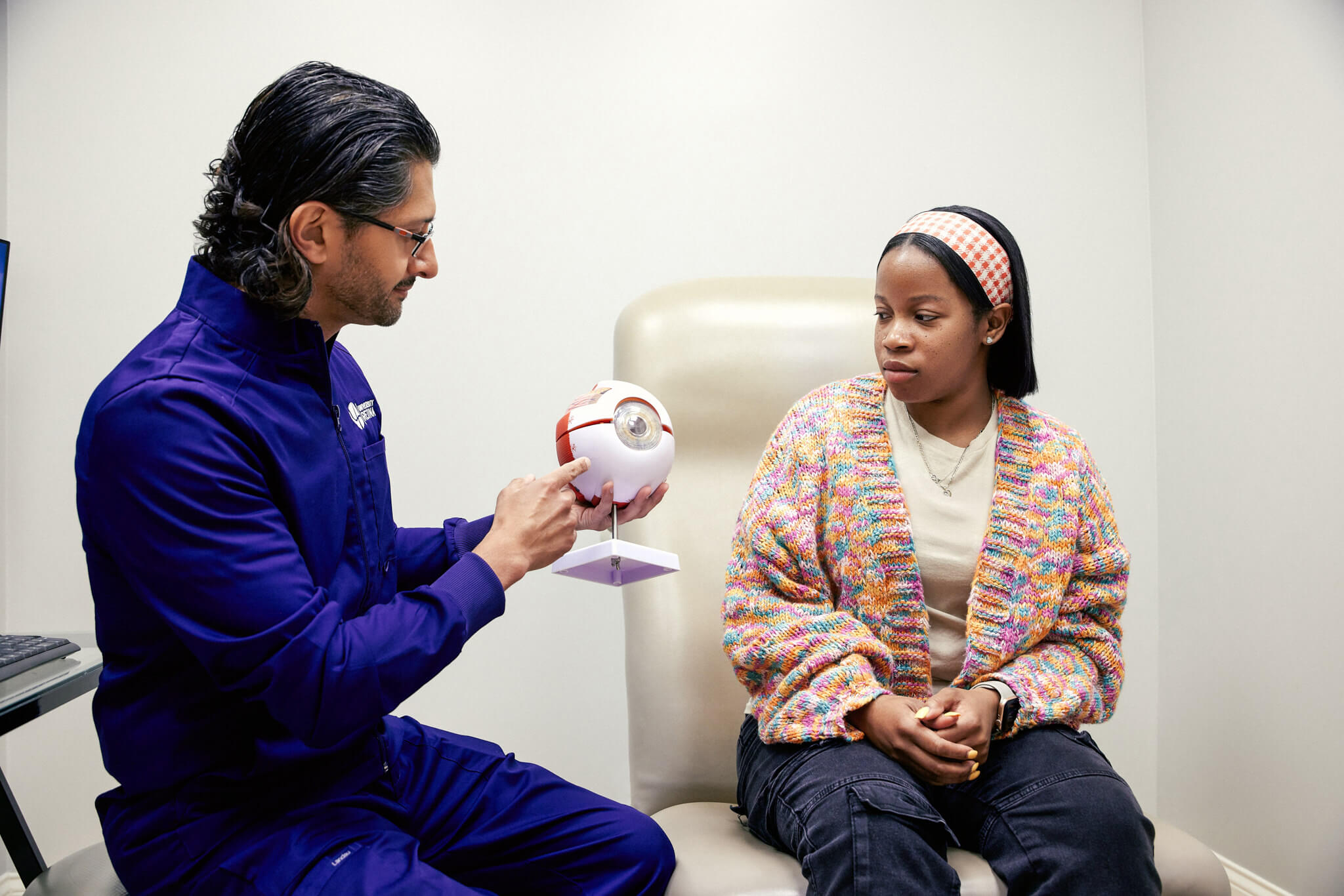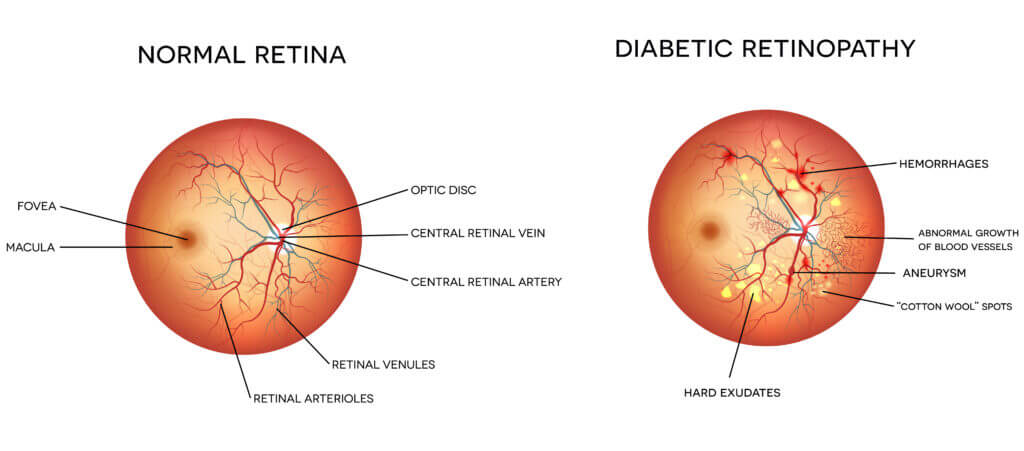
Do you have diabetes? You may be at a higher risk of developing diabetic eye disease. The trusted and experienced ophthalmologists at University Retina treat many eye conditions, including diabetic eye disease.
What is Diabetic Eye Disease?
Diabetic eye disease is an eye condition that can affect people with diabetes. It occurs when there are high levels of blood sugar. If your blood sugar levels are too high, it can damage the blood vessels in the eyes.
Those with diabetic eye disease may experience symptoms like blurred vision, finding it more challenging to see at night (especially while driving), having difficulty seeing colors, and seeing dark spots in their field of vision.
Two of the most common forms of diabetic eye disease are diabetic macular edema and diabetic retinopathy.
What is Diabetic Macular Edema?
Diabetic macular edema happens when fluid leaks into the macula. The macula is the central part of the retina and is what’s responsible for central vision. If it becomes swollen, as is the case with macular edema, it can make your vision blurry or impaired.
The retina takes signals and translates them into images the brain can see. Leaking into the retina occurs when blood vessels in the retina suffer damage due to blood sugar being too high.
Those with macular edema may notice symptoms like distorted vision, dark spots, and no longer being able to see fine details.
What is Diabetic Retinopathy?
Diabetic retinopathy is an eye condition affecting the retina and occurs when blood vessels in the retina become damaged due to increased blood sugar levels. It typically occurs when blood sugar is too high, although you can still develop it even if your blood sugar is under control.
You may also develop diabetic retinopathy if you’ve had diabetes for many years. There are several stages of diabetic retinopathy.

Nonproliferative Diabetic Retinopathy
The first stage, and most mild stage, is nonproliferative diabetic retinopathy. Small bulges in the blood vessels may develop during this stage, which usually has no visible symptoms.
As a result, the retina’s blood vessels may become blocked, leading to the progression of the eye condition.
Proliferative Diabetic Retinopathy
The next stage is proliferative diabetic retinopathy. This stage occurs when new blood vessels grow and develop on the retina.
The new blood vessels are weaker and more fragile than the original blood vessels in the retina. Because of this, they usually leak fluids, including blood. Proliferative diabetic retinopathy can cause vision loss or blindness if not treated.
Advanced Proliferative Diabetic Retinopathy
The most advanced stage is advanced proliferative diabetic retinopathy. In this stage, patients may experience scar tissue formation. The scar tissue may pull on the retina or lead to a retinal detachment.
Are There Signs or Symptoms of Diabetic Retinopathy?
If you have diabetic retinopathy, you may experience symptoms like the following:
However, especially in the earliest stages of diabetic retinopathy, there may not be any discernible symptoms, even if you have the eye condition. It’s best to schedule regular eye exams with your ophthalmologist at University Retina to check for any signs of the eye condition.
How Do You Treat Diabetic Retinopathy?
If you’re diagnosed with diabetic retinopathy, early detection and treatment will help prevent further vision loss if it has already occurred and stop further progression of the eye condition. Treatment options for diabetic retinopathy depend on the severity of symptoms and how far the condition has progressed.
Your eye doctor at University Retina may recommend the following:
Anti VEGF Injections
Anti-VEGF injections are injections that block vascular endothelial growth factor (VEGF). VEGF is a chemical signal that stimulates leaking and the production of abnormal blood vessels. Repeated injections may be necessary to stop abnormal blood vessels from returning.
Laser Therapy
Laser therapy can help treat new blood vessels and stabilize vision. It can also prevent future abnormal blood vessels from forming.
Intraocular Steroids
Intraocular steroids can help reduce macular edema or inflammation in patients with diabetic retinopathy.





